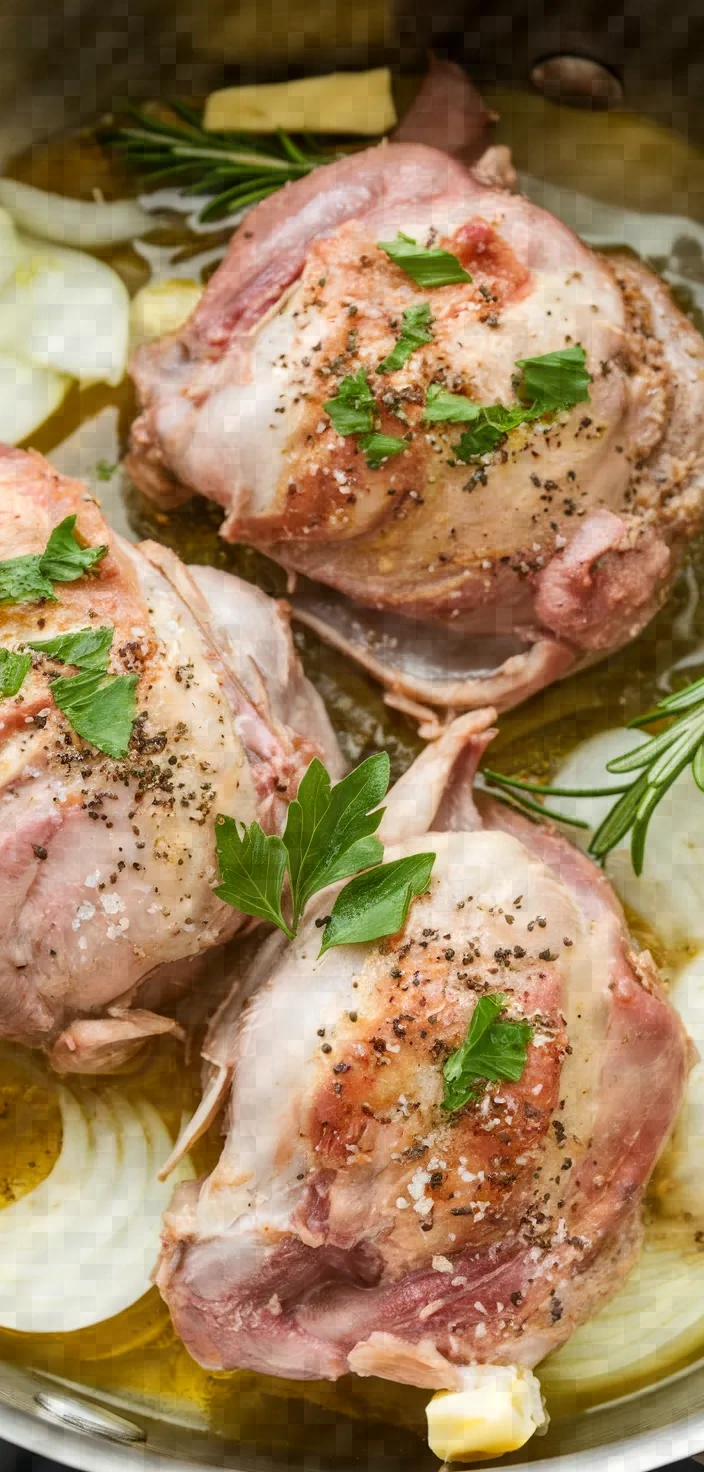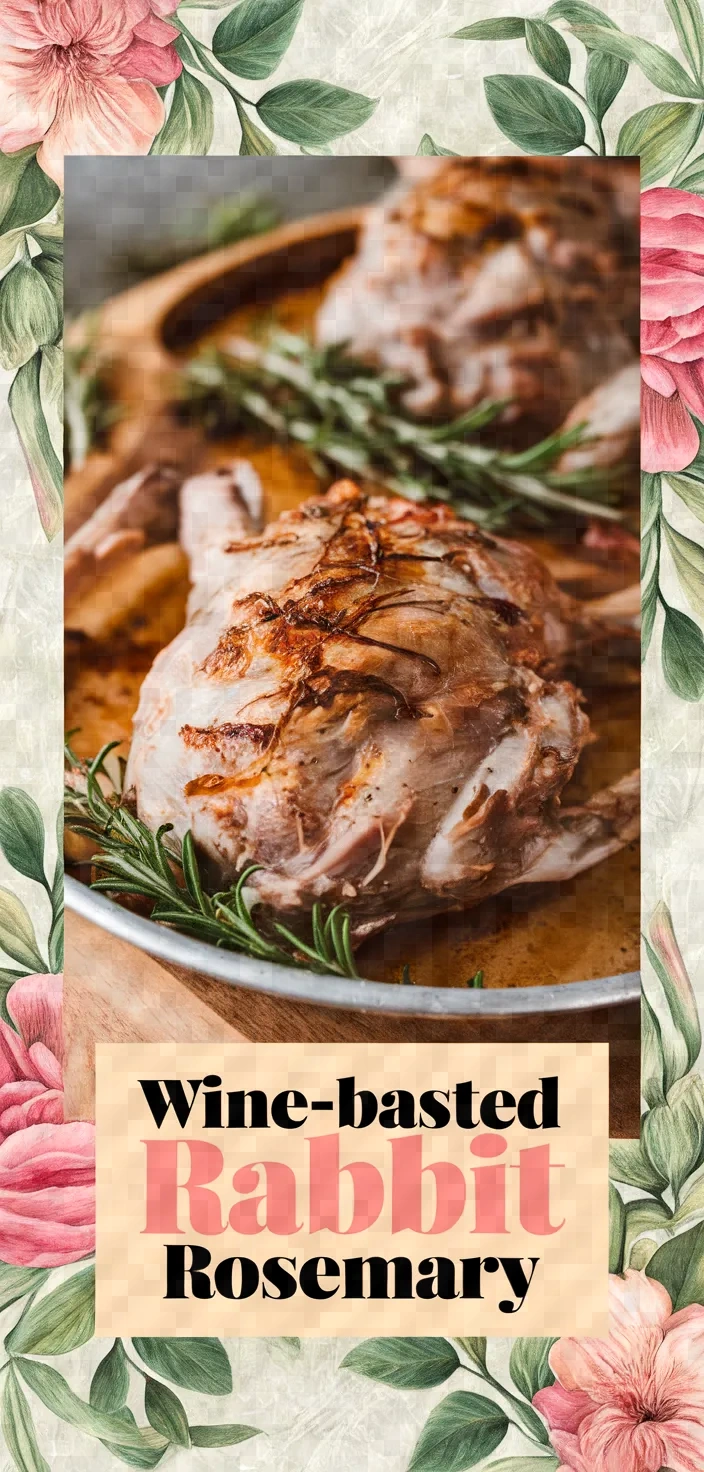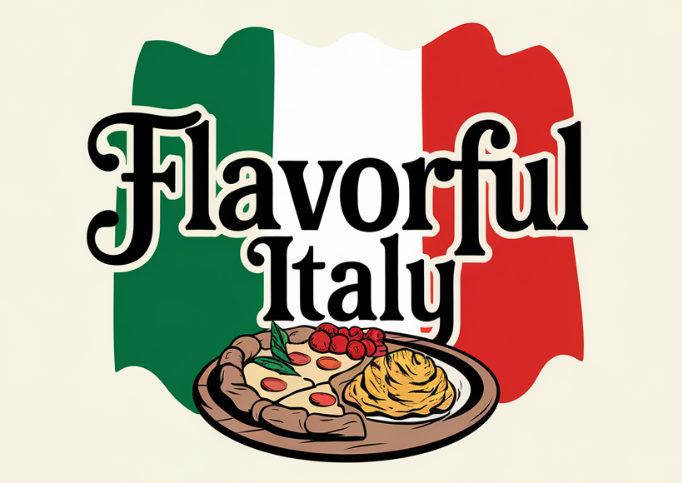Preparing rabbit in a rich, aromatic sauce is undeniably a deeply satisfying culinary adventure that transforms a humble ingredient into something memorable and delightful. The gentle simmering immerses the rabbit in fragrant flavors of rosemary and white wine, while finishing with parsley adds a fresh note that balances the dish beautifully.

I truly enjoy creating this delectable dish using rabbit as the central ingredient, deftly accented by a deep layer of flavor from dry white wine and the fresh, woodsy aroma of rosemary. I think rabbit is one of the best proteins to pair with wine; it has such a mild, sweet flavor that it can stand up to (and doesn’t get overwhelmed by) the acidity in a good white wine.
In this dish, I use a Spanish verdejo, which is bright and full of citrus notes.
Wine Basted Rabbit With Rosemary Recipe Ingredients

- Rabbit: Lean protein source; low in fat; mild, gamey flavor.
- Olive Oil: Healthy fats; adds richness; golden, fruity undertones.
- White Wine: Bold, acidic depth; balances flavors; tenderizes meat.
- Rosemary: Pine-like aroma; fragrant, earthy taste; anti-inflammatory.
- Garlic: Strong, pungent spice; enhances savory notes; antioxidant properties.
Wine Basted Rabbit With Rosemary Recipe Ingredient Quantities
- 1 whole rabbit, cut into serving pieces
- Salt and freshly ground black pepper
- 3 tablespoons olive oil
- 1 large onion, chopped
- 2 cloves garlic, minced
- 1 cup dry white wine
- 1 cup chicken broth
- 2 tablespoons fresh rosemary leaves, chopped
- 1 bay leaf
- 1 tablespoon butter
- 2 tablespoons chopped fresh parsley, for garnish
How to Make this Wine Basted Rabbit With Rosemary Recipe
1. Generously season the rabbit pieces with salt and freshly ground black pepper.
2. In a large skillet or Dutch oven, medium-high heat combined with olive oil creates the right environment for rabbit. Stir the rabbit pieces into the oil and watch them brown, puffing up like little footballs, for about 5 to 7 minutes. Remove the rabbit from the skillet and set it aside.
3. In the same skillet, add the onions that have been chopped and sauté until they have softened, which should take about 5 minutes. Add the garlic that has been minced and sauté for an additional minute.
4. Add the dry white wine, making sure to loosen all the caramelized bits from the bottom of the pan, and bring everything to a gentle bubble.
5. Incorporate well the chicken broth, rosemary, and bay leaf into the skillet.
6. Place the rabbit parts back in the skillet and ensure that they are bathed in the liquid. Smother the skillet with a lid and turn the heat to low. Let the rabbit simmer very gently for 1 to
1.5 hours.
7. Once the rabbit is fully cooked and tender, lift the rabbit pieces from the skillet and place them on a serving platter.
8. Heat the skillet more under the pan so that it reaches medium-high heat. Let the sauce thicken by reducing it somewhat over the next 5 to 10 minutes. Stir in the butter. Let it melt and become part of the sauce.
9. Take out the bay leaf and modify the salt and pepper to suit your taste.
10. Immediately serve the sauced rabbit pieces, garnished with fresh parsley. Enjoy!
Wine Basted Rabbit With Rosemary Recipe Equipment Needed
1. Large skillet or Dutch oven
2. Tongs or spatula
3. Sharp knife
4. Cutting board
5. Measuring cups
6. Measuring spoons
7. Wooden spoon or spatula for stirring
8. Plate or platter for setting aside rabbit
9. Lid for the skillet or Dutch oven
FAQ
- Q: Can I use frozen rabbit for this recipe?A: Certainly, frozen rabbit can be used. Just be certain to fully thaw it in the fridge before using it in any recipes.
- Q: What is a good substitute for dry white wine?A: If you prefer not to use wine, you can substitute chicken broth or a mix of half white grape juice and half water.
- Q: How should I season the rabbit pieces?A: Just season the pieces of rabbit with salt and freshly ground black pepper before you cook them.
- Q: Can I use dried rosemary instead of fresh?A: You can use dried rosemary, but only 1 tablespoon, as dried herbs are more potent.
- Q: How can I thicken the sauce?A: To thicken the sauce, take out the rabbit once done and boil the liquid down until it reduces, or add in a cornstarch and water slurry.
- Q: Is there a vegetarian alternative for rabbit?A: For a vegetarian version, you can replace rabbit with jackfruit or firm tofu while making this dish and adjust cooking times, if necessary.
- Q: Can I cook this recipe in a slow cooker?A: Yes, first sear the rabbit and sauté the aromatics, then move everything to a slow cooker, set to low, and let it cook for 6-8 hours.
Wine Basted Rabbit With Rosemary Recipe Substitutions and Variations
For those who prefer more ordinary meats, chicken or pork can stand in for rabbit.
You can use vermouth or chicken broth for a non-alcoholic version instead of dry white wine.
In the absence of fresh rosemary, 1 tablespoon of dried rosemary can be used as a substitute.
A milder-flavored alternative to the common onion is the shallot.
To get a different aroma, you can swap out the bay leaf for a small sprig of thyme.
Pro Tips
1. Marinate for Extra Flavor Consider marinating the rabbit pieces ahead of time in a mixture of olive oil, garlic, rosemary, and white wine for a few hours or overnight. This will help infuse the meat with additional flavor and make it more tender.
2. Sear for Caramelization Ensure the rabbit pieces are well-dried before searing. This will help them brown more effectively, enhancing the dish with rich, caramelized flavors.
3. Wine Selection Choose a good quality dry white wine that you enjoy drinking, as its flavors will concentrate and impact the final taste of the dish. A Sauvignon Blanc or Chardonnay would work well.
4. Cooking Time Keep an eye on the simmering time. Depending on the size and age of the rabbit, it might become tender sooner or later than the recipe suggests. Check periodically starting at 1 hour to ensure it’s not overcooked and dry.
5. Herb Variation Experiment with additional fresh herbs such as thyme or sage for a different aromatic profile. These can complement the rosemary and give the dish more complexity.

Wine Basted Rabbit With Rosemary Recipe
My favorite Wine Basted Rabbit With Rosemary Recipe
Equipment Needed:
1. Large skillet or Dutch oven
2. Tongs or spatula
3. Sharp knife
4. Cutting board
5. Measuring cups
6. Measuring spoons
7. Wooden spoon or spatula for stirring
8. Plate or platter for setting aside rabbit
9. Lid for the skillet or Dutch oven
Ingredients:
- 1 whole rabbit, cut into serving pieces
- Salt and freshly ground black pepper
- 3 tablespoons olive oil
- 1 large onion, chopped
- 2 cloves garlic, minced
- 1 cup dry white wine
- 1 cup chicken broth
- 2 tablespoons fresh rosemary leaves, chopped
- 1 bay leaf
- 1 tablespoon butter
- 2 tablespoons chopped fresh parsley, for garnish
Instructions:
1. Generously season the rabbit pieces with salt and freshly ground black pepper.
2. In a large skillet or Dutch oven, medium-high heat combined with olive oil creates the right environment for rabbit. Stir the rabbit pieces into the oil and watch them brown, puffing up like little footballs, for about 5 to 7 minutes. Remove the rabbit from the skillet and set it aside.
3. In the same skillet, add the onions that have been chopped and sauté until they have softened, which should take about 5 minutes. Add the garlic that has been minced and sauté for an additional minute.
4. Add the dry white wine, making sure to loosen all the caramelized bits from the bottom of the pan, and bring everything to a gentle bubble.
5. Incorporate well the chicken broth, rosemary, and bay leaf into the skillet.
6. Place the rabbit parts back in the skillet and ensure that they are bathed in the liquid. Smother the skillet with a lid and turn the heat to low. Let the rabbit simmer very gently for 1 to
1.5 hours.
7. Once the rabbit is fully cooked and tender, lift the rabbit pieces from the skillet and place them on a serving platter.
8. Heat the skillet more under the pan so that it reaches medium-high heat. Let the sauce thicken by reducing it somewhat over the next 5 to 10 minutes. Stir in the butter. Let it melt and become part of the sauce.
9. Take out the bay leaf and modify the salt and pepper to suit your taste.
10. Immediately serve the sauced rabbit pieces, garnished with fresh parsley. Enjoy!
